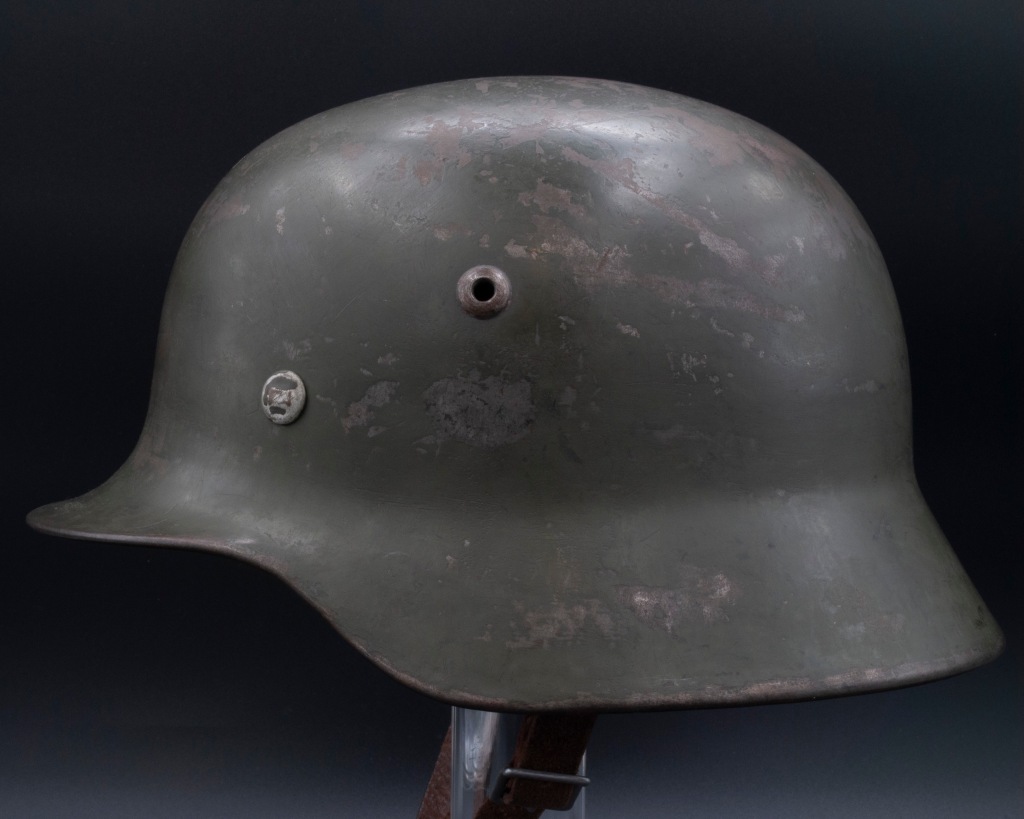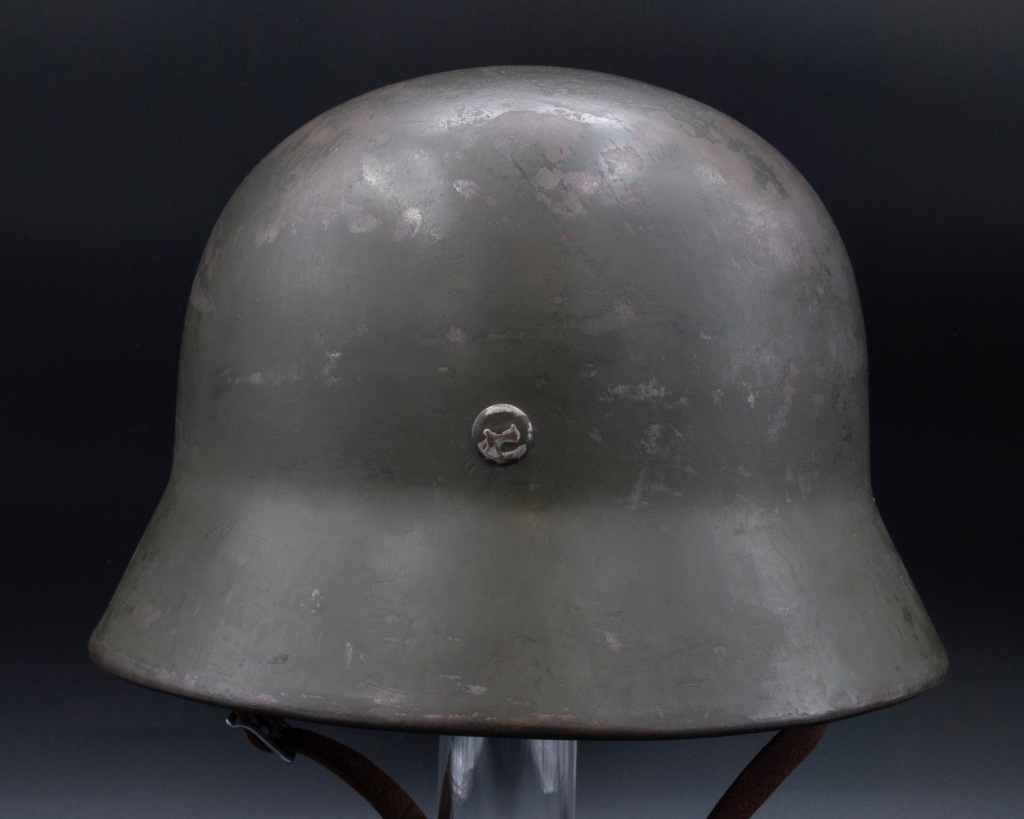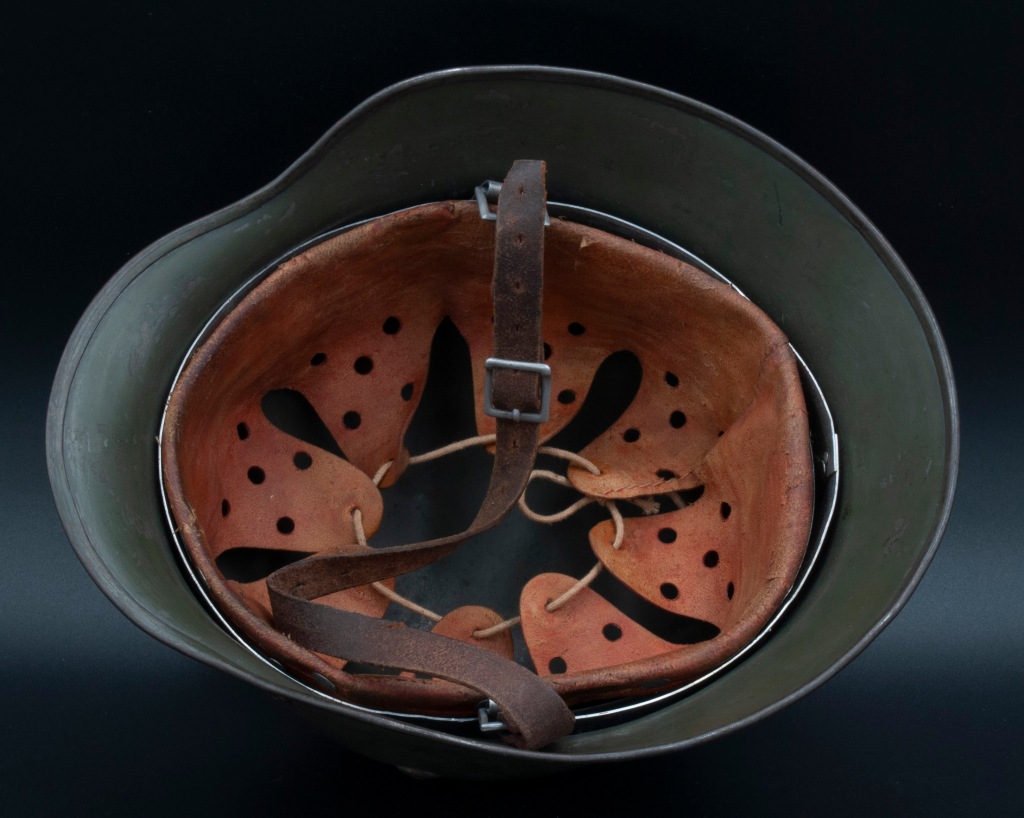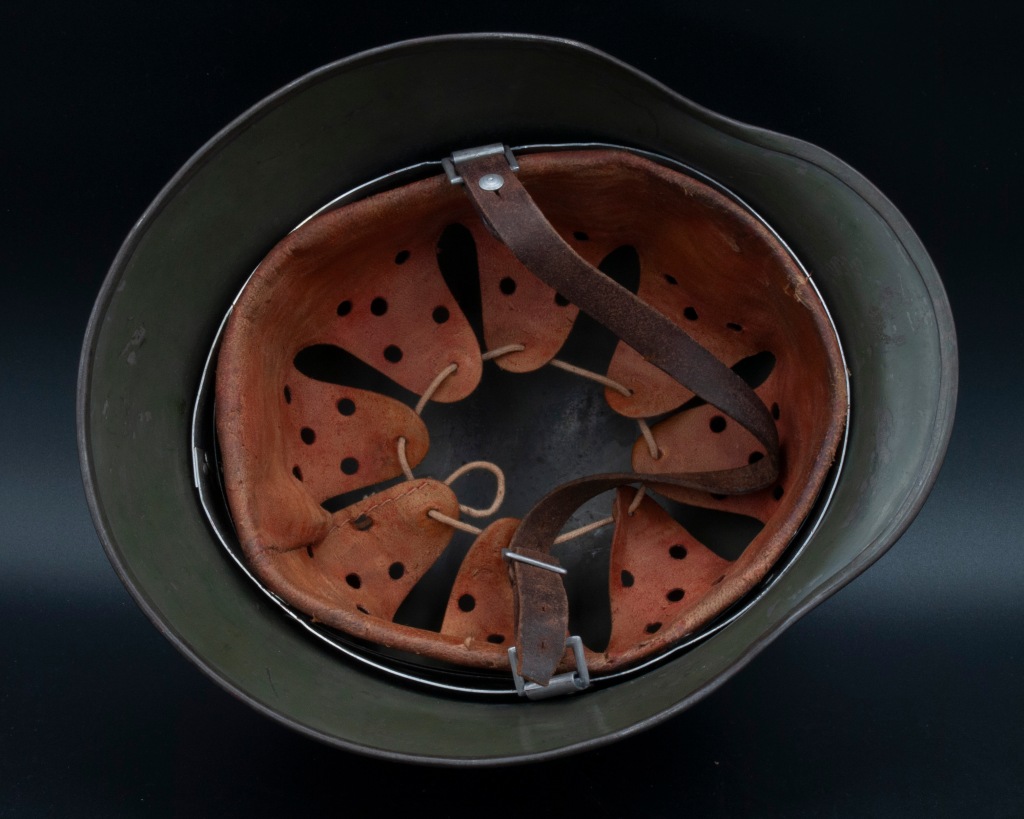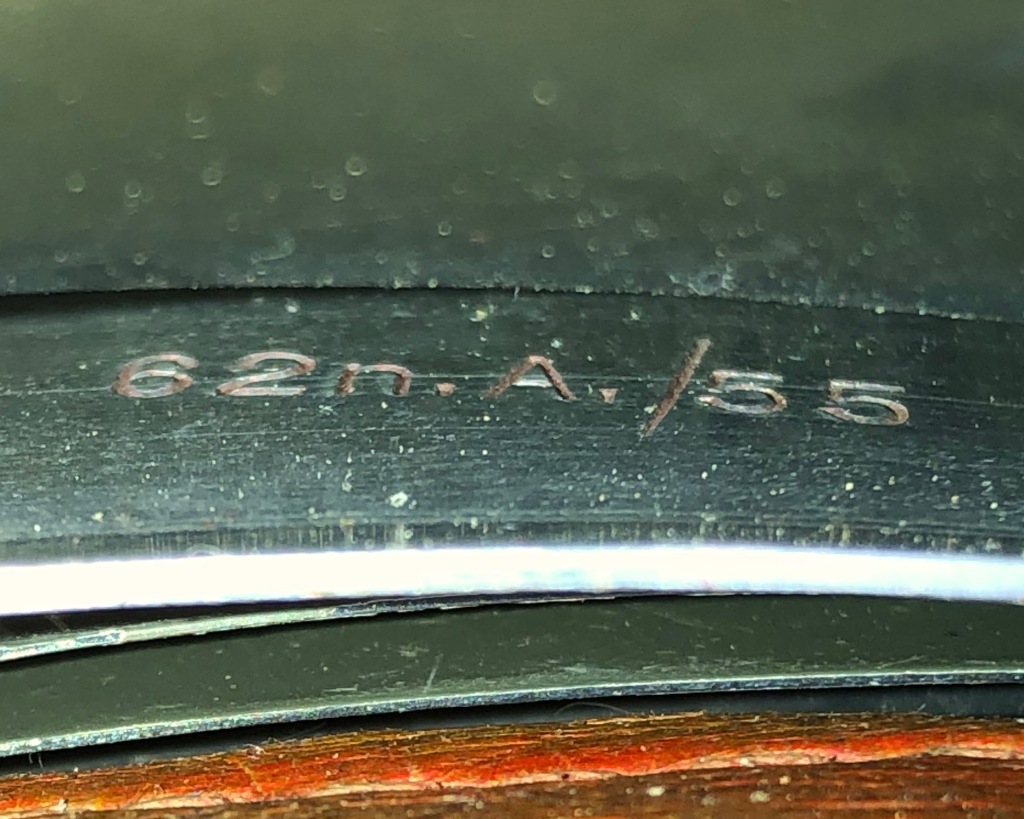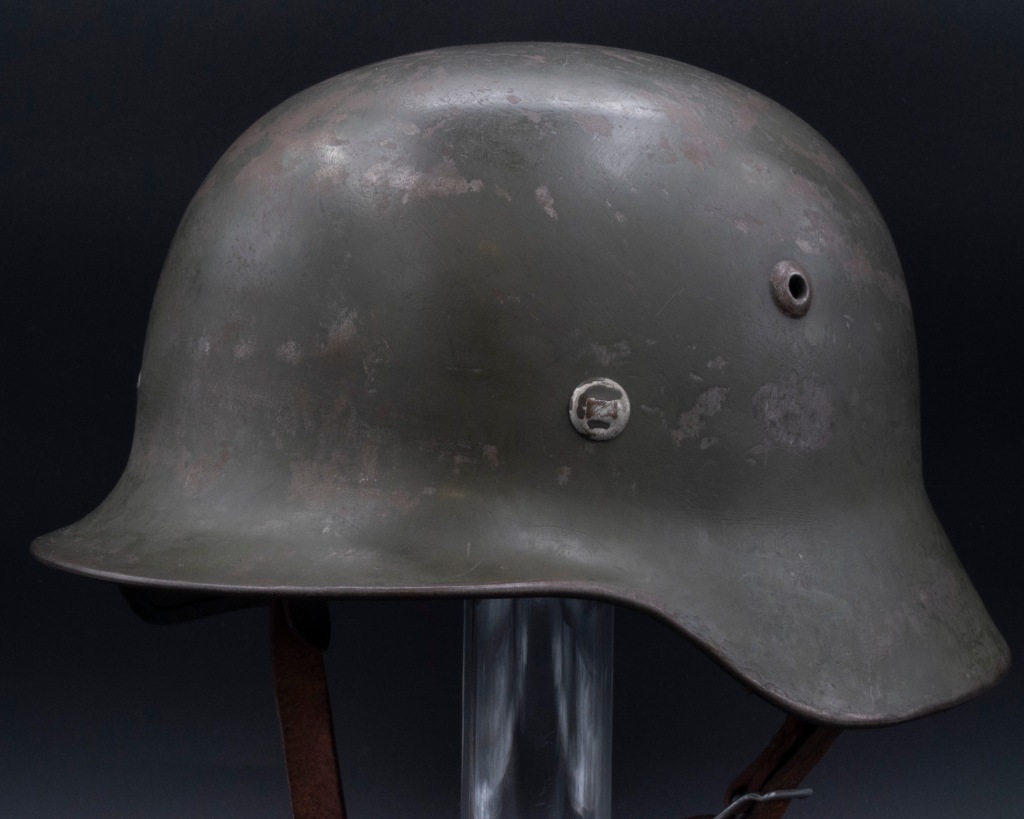

General Information: The Eisenhuttenwerke firm in Thale produced 100,000 export versions of the Model 1935 for use in Spain. The helmets were not, as is commonly believed by collectors, left behind by the German Legion Condor; at least the great majority were not. This information came to light as a result of research done by Lucas Molina Franco who studied period documents relating to Nationalist arms and materials procurements from Germany. [1] The total number of Germans serving in the Legion Condor was just over 15,000 and it never had more than 6,500 serving at any one time.[2] Many of these men were airmen or support troops, like mechanics or technicians who would not have worn helmets. Furthermore, in period photos Condor Legion soldiers are often seen wearing World War One helmets, so not all who received helmets were issued M35s. The number of M35s issued to Germans and then left behind must, therefore, have been small.
The German Model M35s exported to Spain were produced by the Eisenhuttenwerke firm and were all marked either “ET” or in some cases lack manufacturer stamps. The known range of lot numbers is from 2854 to 3238. This corresponds to production dates of 1936 and 1937 although some have liner or chinstrap markings from 1938. In addition to sometimes lacking manufacturer code stamps on the skirt of the helmet, the export helmets also sometimes lack manufacturing stamps on the liner bands. The reason for the lack of manufacturer identification on some export helmets is unknown and this question has been the subject of speculation by collectors. I believe lack of manufacturer identification may be simply because it was not required for exported helmets as it was for helmets procured for German armed forces.
The export versions of the M35 do not seem to have been subject to the same quality control as the helmets destined for the German armed forces. The liners often have defects like unsown seams, missing reinforcement tabs for drawstrings, or shoddy leather treatment like the one in the photo below. The paint quality is sometimes poor compared to the domestic versions. The helmets were either painted parade finish light green or Luftwaffe blue. Most were subsequently repainted brown.
One interesting historical note regarding the German M35s exported to Spain and China is that these export orders were filled before the German army was fully equipped with the new model. The Germans prioritized shipments to their Spanish and Chinese nationalist friends over their own procurement needs. It is possible that this was done for financial reasons, or perhaps the Germans did this because their allies were involved in hot wars and they were not.
Displayed Example: I got this helmet from a Spanish collector. It is a very rare example of a German export M35 in its original factory condition. The vast majority of the M35s that ended up in Spain were modified in various ways. Typically, they were repainted brown and almost all had brackets welded for the attachment of the Nationalist eagle. This was done post-Civil War. Most had Spanish replacement liners. It’s very rare to find an example like this one in its factory original condition. The liner band is marked “Max Densow, Berlin S.O. 36, 1938.” Strangely it has a German army procurement office acceptance stamp in the dome. It’s the only Spanish export helmet I’ve seen with this feature. It looks to be a 1938 date although the stamp is faint.
Collector Notes: Despite their comparative rarity among the stahlhelm family of helmets, the German export M35s can be a relatively inexpensive addition to a collection, particularly if you are willing to settle for a post-civil war modified specimen. A factory original example of the type is a rare beast indeed, but a patient and lucky collector might be able to acquire one for an affordable price. A large number of Spanish Civil War helmets, including some M35s, surfaced in Brooklyn, NY in the 1970s. They were purchased for scrap metal value from the Spanish government by a character who called himself the “Helmet King” and sold by him from ads in comic books. Sadly, many of the M35 from this and other sources ended up with fake water transfer Nazi decals. These early fakes can usually be easily identified. The unfortunate thing is that the addition of fake decals and other modifications undermine the historical and market value of these interesting helmets.
* Pappini, Umberto. Gli Elmetti Del Corpo Truppe Volontarie Italiano e Della Guerra Civile Spagnola: The Helmets Italian C.T.V. and Spanish Civil War. Books and Memories. 2016.
[1] Molina Franco. 2005.
[2] Caballero Jurado. 2006.



